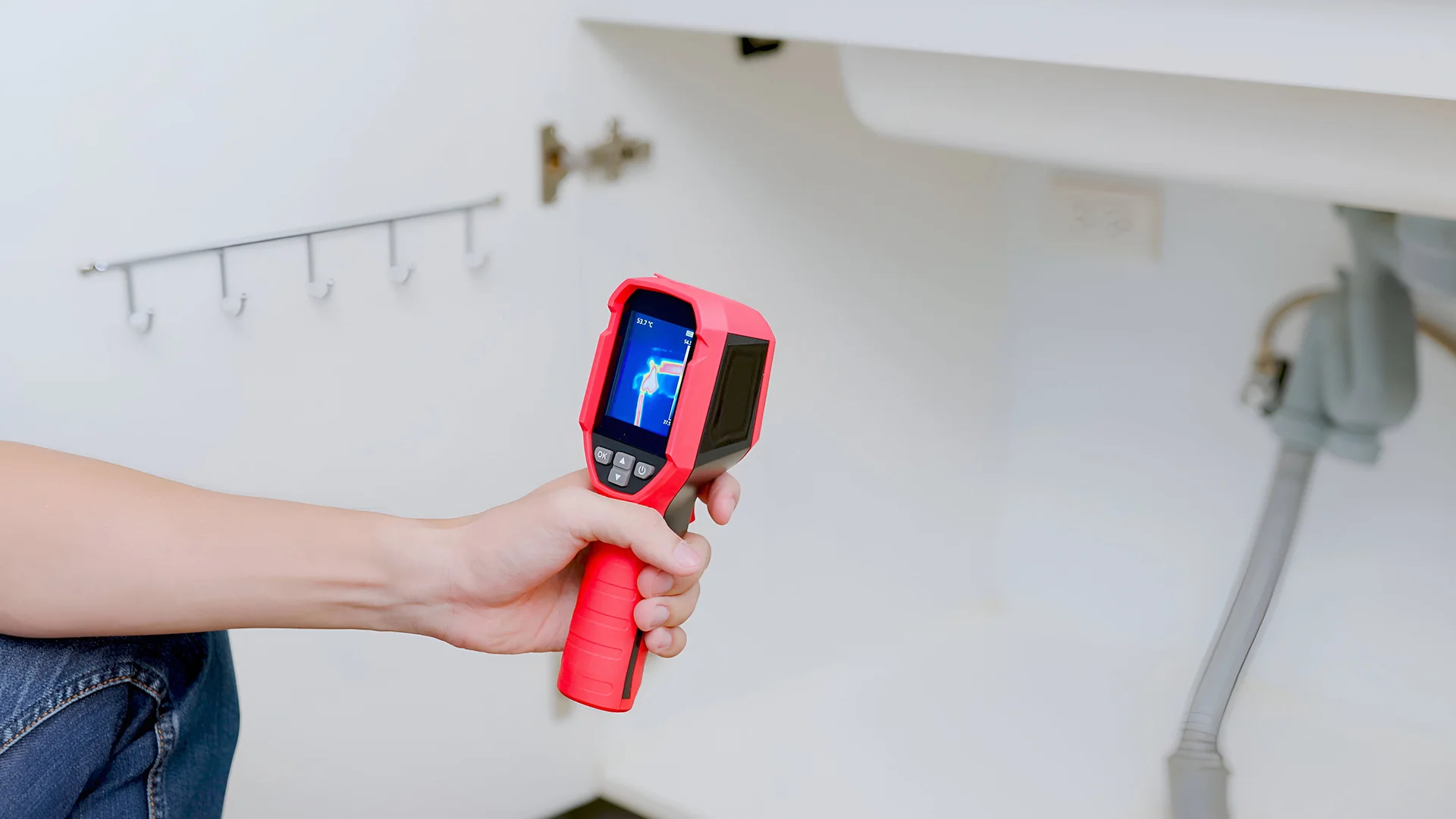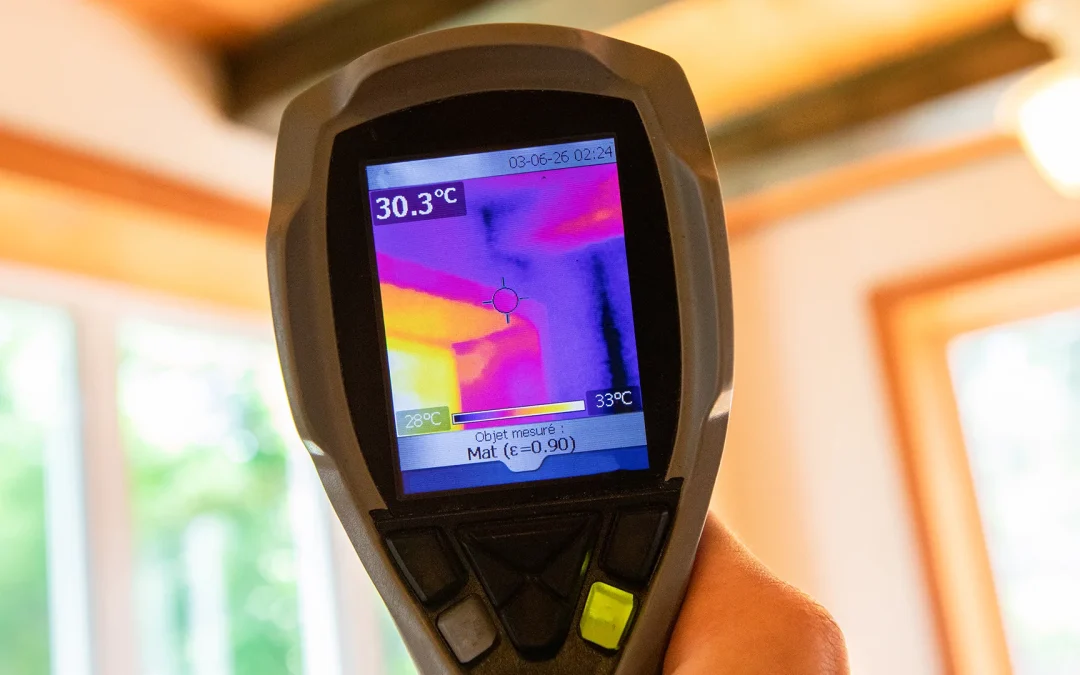Thermography is a technological marvel that allows people to use infrared radiation or heat to examine the rise and fall of temperatures in an area. Infrared thermography, in particular, lets people look at many electrical issues brewing in their homes to prevent them from becoming bigger issues later.
However, this technology is still young, and it is a confusing topic for plenty of people. Naturally, questions are floating around about thermography because of its youth. Is thermal imaging safe for electrical equipment? What types of issues can it detect in electrical systems? This blog will answer those questions and more, giving you a full breakdown of thermography.
What Is Infrared Thermography
Infrared thermography uses thermal cameras to visualize the infrared radiation that components like circuits or breakers emit. This can reveal minor or even invisible problems present in these components, tipping you off to them in their earliest stages so you can handle them before they become bigger issues. Most commonly, technicians, thermographers, or electricians use this technique via a thermal imager as a part of building maintenance or for home inspections.
Benefits of Using Thermal Imaging for Electrical Inspection
Thermography has a host of benefits when used for electrical inspections. It is an incredibly informative tool that makes the job much easier—the following list details just some of its positive qualities.
Catches Problems You Can’t See
Thermal imaging reveals hot spots, such as overloaded circuits or loose connections, that the naked eye misses, especially inside electrical panels.
Keeps Everyone Safe
It’s completely non-intrusive, so we can inspect live electrical systems without taking anything apart or putting anyone at risk.
Helps You Fix Issues Early
Thermal imaging lets you spot trouble early, making minor, affordable fixes before they turn into expensive repairs or dangerous failures.
What Types of Issues Can Thermal Imaging Detect in Electrical Systems
Compared to traditional inspection tools like multimeters or voltmeters, thermal imaging (or infrared thermography) can identify overheating components faster and more effectively—often before they fail. It’s a noninvasive tool that spots hidden dangers by detecting abnormal heat, even when components are sealed or buried.
Here’s what thermal imaging can uncover in electrical systems:
Overheating Components
Thermography quickly highlights hot spots in panels, breakers, and wiring—long before they pose a safety risk or shut down your system.
Loose or Corroded Connections
Even if the connection isn’t visible, excess heat from electrical resistance gives it away. Thermal imaging picks this up without opening anything.
Phase Imbalances
In three-phase systems, uneven heating signals a phase imbalance. Thermography makes it easy to catch this early, helping you avoid power quality issues or equipment damage.
Internal Faults in Panels or Conduits
While other tools might miss faults behind covers or inside conduits, thermal imaging reveals them instantly—no dismantling is required.
Damaged Insulation
Traditional methods often overlook insulation issues. Thermography exposes them by spotting unusual heat patterns caused by compromised wiring.
Problems in Buried Cables
Got underground lines? Thermal imaging can still help. It detects surface heat anomalies that point to deeper issues in buried cables—something most inspection tools can’t do.

What to Expect During an Electrical Thermal Imaging Inspection
If you’re dealing with flickering lights, unexpected power surges, or want peace of mind that your electrical system is safe—thermal imaging is one of the smartest inspections you can schedule. It helps detect hidden electrical issues before they lead to costly repairs, safety hazards, or downtime.
At Kissee Inspection Services, we use advanced thermal imaging (infrared scanning) to detect problems inside your electrical systems without removing anything. It’s fast, noninvasive, and highly accurate.
Here’s what happens during the inspection:
Pre-Inspection Setup
Your inspector starts by reviewing the layout of your electrical system and any available blueprints or schematics. They walk through the property, prep the thermal camera, and safely open any panels or access points to get a clear view of major components.
Thermal Imaging Scan
Next, they use a high-resolution thermal imager to scan all critical areas—breaker panels, outlets, wiring, switches, and distribution boards. The camera detects heat signatures and spots abnormal temperature differences that signal underlying issues.
You can’t always see loose connections or overloaded circuits—but thermal imaging sees the heat they produce.
Compare and Identify
Your inspector compares the thermal readings to what’s considered normal operating temperatures. Any “hot spots” immediately stand out. These temperature spikes could mean arcing, damaged wires, unbalanced loads, or failing breakers.
Report and Documentation
After the scan, you’ll get a full report with thermal images, a breakdown of the issues found, risk levels, and clear explanations of what everything means. We make it easy to understand—even if you’re not an electrician.
Real Recommendations
Finally, your inspector reviews the report with you and offers expert recommendations. If there are serious issues, they’ll explain what to fix now—and what can wait. We’ll even guide you on who to contact for repairs if needed.
Stay Ahead of Electrical Failures with One Smart Scan!
Electrical problems rarely announce themselves. But left unchecked, they can lead to power outages, system failure, or even fire. Thermal imaging gives you an inside look—without tearing anything apart—and helps you take action before damage occurs.
Kissee Inspection Services has used infrared thermal imaging inspections to help homeowners, businesses, and property managers in North Dallas stay safe and avoid costly surprises.
Want to know what’s hiding inside your electrical system? Call us today or book your inspection online!




